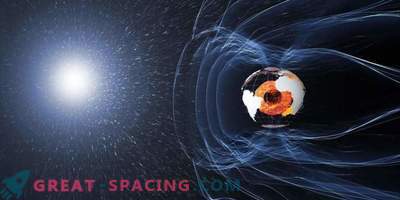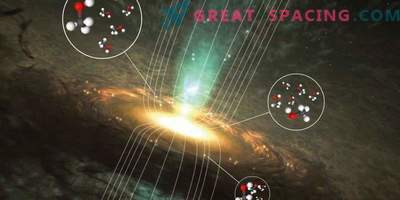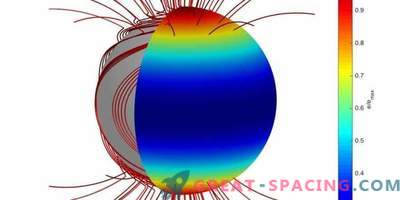
In the first fractions of a second of the formation of our Universe, not only elementary particles, but also magnetic fields were created. Scientists from the Institute of Astrophysics. Max Planck decided using the example of a 3D model to show how these fields should look like now.
The Big Bang still hides secrets. Researchers use various methods to get information about the first moments of the existence of space. One of the options is cosmic magnetic fields created at the moment of the birth of everything and still existing.
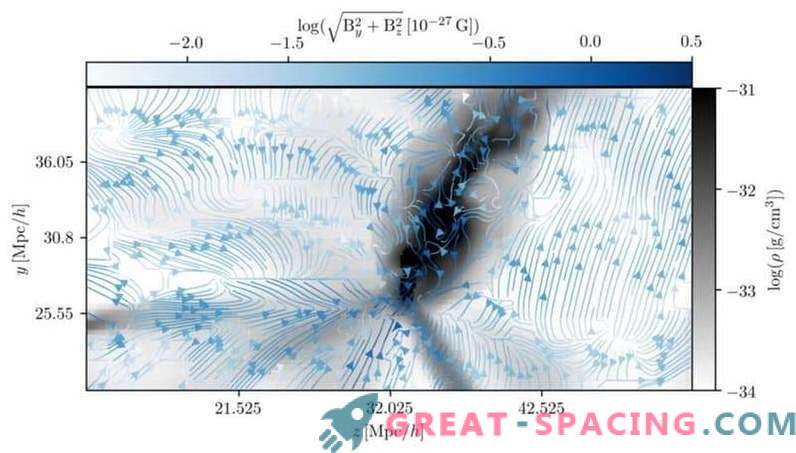
Cosmic Fields: cut through the Perseus-Pisces galactic cluster with matter distribution (gray) and Harrison's magnetic field (blue arrows)
There is a simple plasma-physical effect called the Harrison effect. It was he who was supposed to form the magnetic fields in the Big Bang. The vortex motions in the early space formed electric currents from friction, which is why the magnetic field appeared.
Knowing the information about plasma vortices in the early Universe, one can calculate in detail the process of generating magnetic fields. The necessary information is in the galaxies distributed around us. Scientists know the laws of their formation, and therefore you can quite accurately follow the evolution of the distribution of matter.
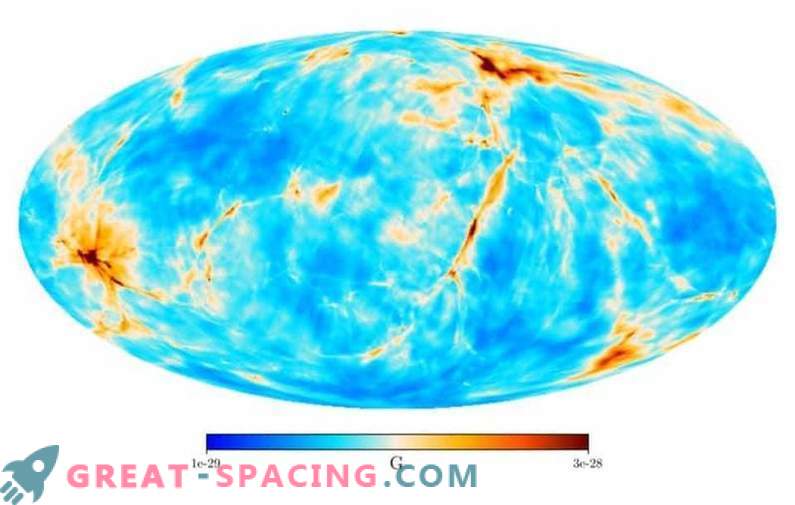
Here it can be seen that the strength of Harrison’s magnetic field is averaged over a sphere with a radius of 300 million light years around the Earth. Two areas with particularly strong tides are the Perseus Pisces galactic clusters (right) and Virgo (above)
The researchers decided to use these logical conclusions to calculate today's remnants of the primary magnetic fields in our space region. For this, we studied the distribution of galaxies in the nearest territory and the concentration of matter during the Big Bang. The Harrison effect was also taken into account. As a result, it turned out to predict the structure and morphology of the primary magnetic field at a distance of 300 million light years.
Unfortunately, this theory cannot be verified by observations: the calculated field is 27 orders of magnitude smaller than the magnetic field of our planet and below the current measurement threshold. But predictions show that scientists understand cosmic features and effects with high accuracy. Perhaps in the future it will be possible to measure this feature. After all, 100 years ago, Einstein thought that gravitational waves were too weak to be detected.
